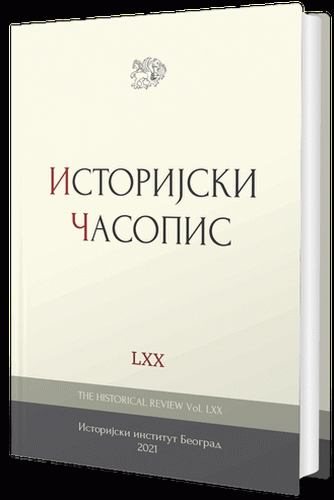ПОСЕДИ ЈАКШИЋА У СЛАВОНИЈИ И СРЕМУ
ESTATES OF THE JAKŠIĆ FAMILY IN SLAVONIA AND SREM
Author(s): Aleksandar KrstićSubject(s): Local History / Microhistory, 15th Century
Published by: Istorijski institut, Beograd
Keywords: Stefan Jakšić the Elder; Dmitar Jakšić the Elder; Stefan Jakšić the Younger; Marko Jakšić; Dmitar Jakšić the Younger; Korođ (Kórógy); Árpatarló; Srem (Syrmia); castle; church tithe
Summary/Abstract: The paper discusses data on the estates of the Jakšić family in eastern Slavonia and Srem based mostly on unpublished documents, which has not drawn special attention of the privious historiography. In 1477, the brothers Stefan and Dmitar Jakšić received the Korođ (Kórógy) fortress with the associated possessions in Valkó County from Hungarian king Matthias Corvinus. The estate remained in the possession of the Jakšićs for sixty years, until the fall of Slavonia under Ottoman rule, but the data about it provided by sources are very scarce. An approximate idea of the structure of this estate of the Jakšićs can be obtained on the basis of the census of the Korođ estate from 1469. In Srem County, the Jakšićs owned the castle (castellum) and the market town (oppidum) of Árpatarló with at least six villages and one wasteland, as reported by judicial acts related to the conflict between Marko and Dmitar Jakšić the Younger with the baronial family Geréb of Vingárt over this estate (1496–1498). The document from 1519 concerning the manner of collecting the church tithe from wine in the market town of Árpatarló and its appurtenances gives some new data about Stefan Jakšić the Younger, who died in 1519, before August 20, and not about ten years earlier, as has long been thought. Árpatarló was destroyed in the following years during the Ottoman attacks on Srem, and its exact location is unknown. According to one opinion, Árpatarló is identical with the present-day town of Ruma, and according to another opinion, it was located on the site of Gradina south of the monastery and the settlement of Krušedol.
Journal: Историјски часопис
- Issue Year: 2021
- Issue No: 70
- Page Range: 177-213
- Page Count: 27
- Language: Serbian

